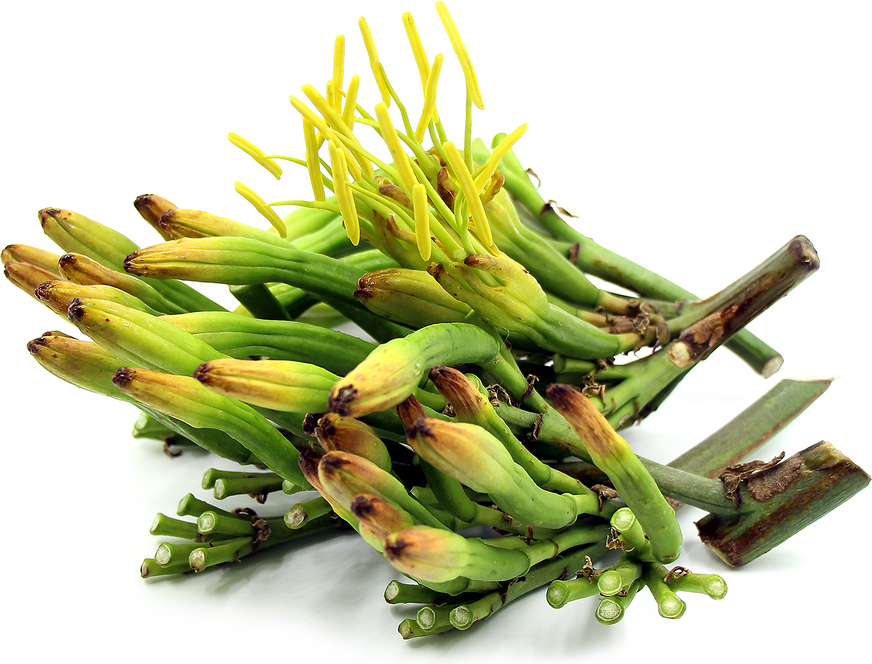


Agave Cactus Buds
Estimated Inventory, lb : 0
Description/Taste
The Agave plant has massive dusty green leaves that are thick and coarse, often edged with sharp hardened spikes. A central flower stalk 6-12 meters tall emerges from the plant and resembles a giant spear of asparagus. The branched stalk produces hundreds of oblong buds approximately 5-10 centimeters long. They are a brilliant green color with a firm texture that snaps when broken in half. On the palate, the buds are crunchy and succulent with sweet herbaceous notes and a slight tang. They are best when foraged while the buds are still closed, as the open flowers can become bitter.
Seasons/Availability
Agave buds are available in the summer.
Current Facts
The Agave genus includes over 200 species of plants. One of the most familiar species is Agave americana, a native of tropical America. Other common names include maguey, which is what it is referred to in Mexico, or century plant alluding to the plant’s long life before blooms develop. The Agave is monocarpic meaning that it dies after it flowers. So to prolong its greenery the plant should not be overwatered or fertilized. The entire plant is edible and has been used as a food source and in natural medicine throughout history. Its aromatic and plentiful buds appear in the summer and are a sweet yet savory treat.
Applications
Agave buds’ sweet and savory flavors make them a versatile ingredient. They may be eaten raw, but are often boiled or blanched to soften their sometimes fibrous texture. Once boiled, the buds can be battered and fried or added to scrambled eggs. Their clean vegetal flavor elevates rich meats such as bacon or smoked ham. Their sweet honeyed quality compliments maple syrup, vanilla, baking spices and dairy rich desserts. It is recommended that if the pollen tips have emerged, they be removed before cooking to avoid any bitter flavor.
Ethnic/Cultural Info
The Agave leaves were used by many Native Mexican Indian tribes as a source of fibers for basket weaving and building material.
Geography/History
The Agave plant is native to Mexico, but has since been naturalized to the American Southwest and other climates that share the same hot dry conditions. The name Agave translates to 'noble' perhaps due to the plant's long life span. Many species live for 40 or 50 years before the central flower stalk develops and blooms. The starker the growing conditions, the longer the plant lives before this occurs. Therefore to induce bud growth the Agave may be pampered with plenty of irrigation and fertilizer.
Recipe Ideas
Recipes that include Agave Cactus Buds. One
| The Urban Hunter Gatherer |
|
Pikcled Agave Buds |
Podcasts




